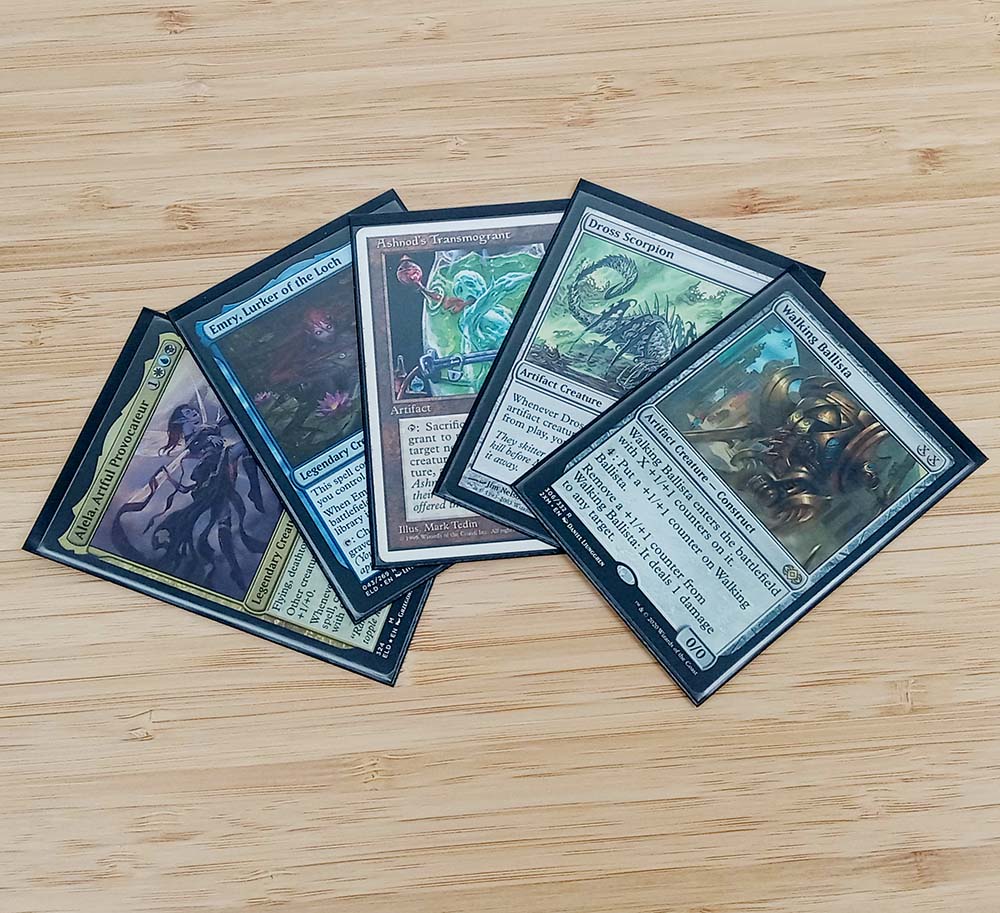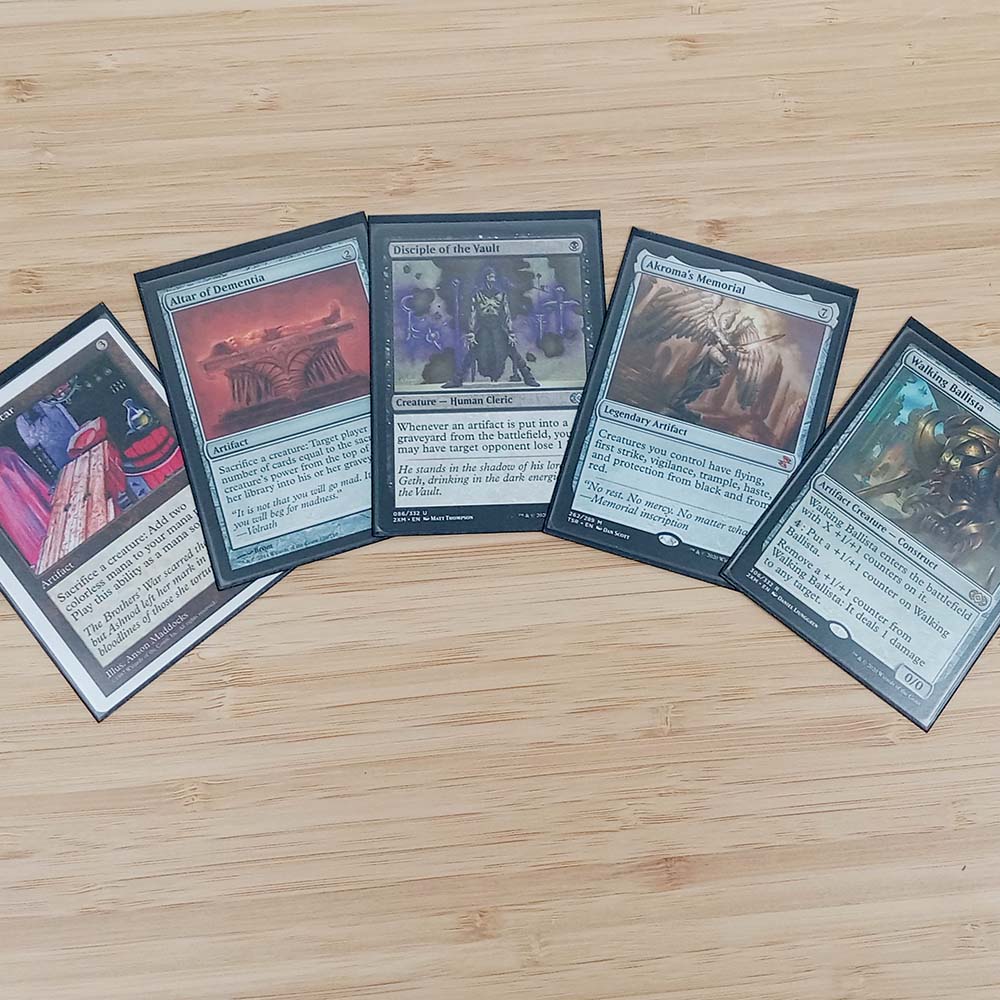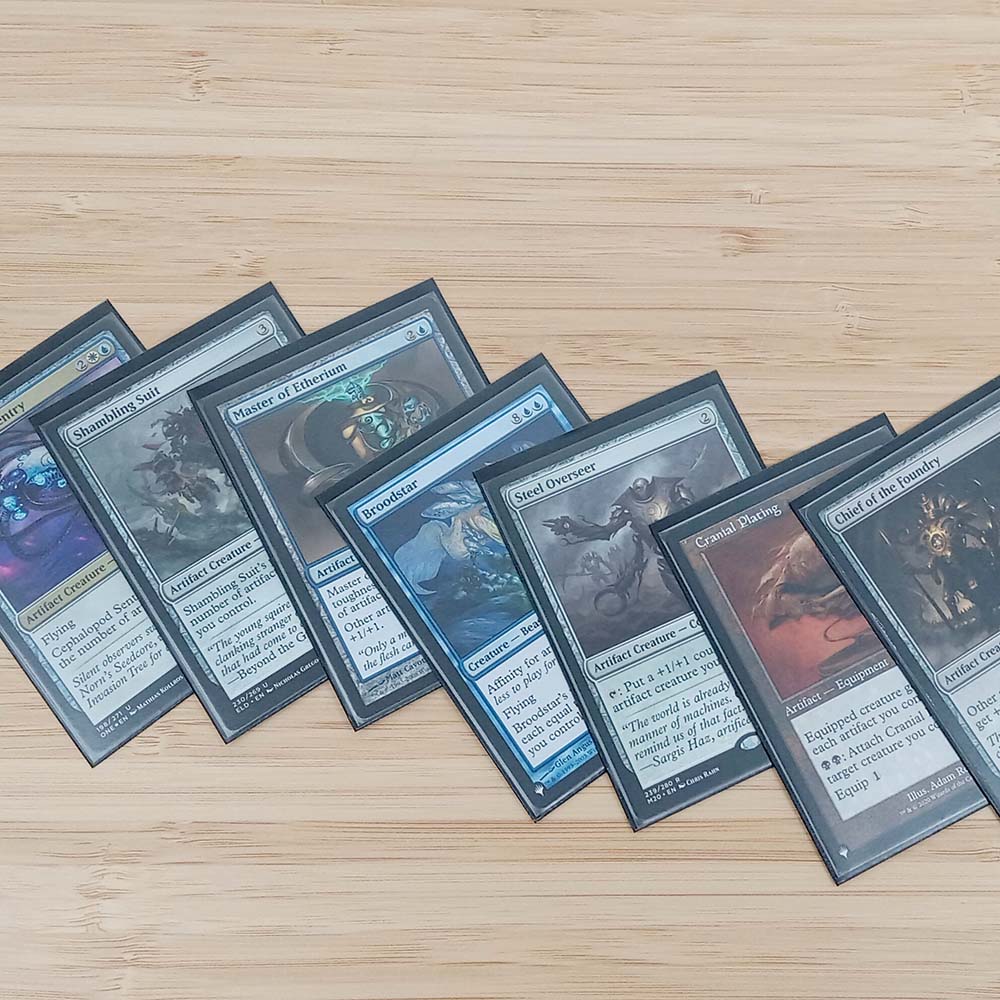Oops, All Artifacts! Alela Combo Casual EDH Deck Tech
Many commander players tune their decks, optimizing every aspect of play. Every weakness is covered, every strategy exploited, and no wasted space is allowed. This is not one of those decks. At its heart, the deck wants to cast artifacts to create Faerie tokens. This isn’t a win condition in and of itself usually, but it facilitates various paths to victory. As usual, you can find the decklist on Moxfield.
First, we should look at the commander. Alela, Artful Provocateur is a 2/3 Faerie Warlock with flying, deathtouch, and lifelink for 1WUB. While in play, your other flying creatures get +1/+0, and when you cast an artifact or enchantment you create a 1/1 blue Faerie token with flying. I felt building around artifacts was better than enchantments overall, although this is entirely a personal preference. In any case, going with the artifact route opens a few different win conditions.
The basic trick of the deck is to get Alela, Emry, Lurker of the Loch, Dross Scorpion, and some means of making Emry an artifact creature in play. First, make Emry an artifact creature. Then, you want to cast Walking Ballista or Stonecoil Serpent for 0 mana. Alela creates a Faerie token before the 0 toughness creature goes to the graveyard. Tap Emry to cast the same artifact creature for 0, which will create another token before going to the graveyard again. This triggers Dross Scorpion, which will then untap Emry. Tap Emry, and repeat endlessly.

The easiest use of this combo is to simply make an army of flying Faerie tokens that are effectively 2/1. If you have Shimmer Myr, or Raff Capashen, Ship’s Mage in play, use the combo on your opponent’s turn to let your army attack as soon as your turn arrives. With Akroma’s Memorial, all the tokens gain haste, letting them attack immediately. This can be effective, but is of course vulnerable to board wipes and other removal.
If you have Disciple of the Vault in play, each iteration of the combo can make an opponent lose 1 life. Vedalken Archmage will draw a card for each cycle, letting you dig for other win cons. With Ashnod’s Altar, you can simply sacrifice each Faerie token to gain 2 colorless each. Then, spend that mana on Stonecoil Serpent or Walking Ballista. Walking Ballista works better, as you can then remove all the counters to ping your opponents down to 0 immediately. Another option is to use Altar of Dementia to mill your opponents out. The current board state will determine which option is best and what to avoid.

If you can’t do the combo, there are still some tricks left. Etherium Sculptor, Foundry Inspector, and Jhoira’s Familar all make your artifacts cost 1 colorless each. As most of the deck is made of artifacts, this can accelerate you quite a lot. Chief of the Foundry gives your artifact creatures +1/+1, and Steel Overseer can tap to put a +1/+1 counter on each of your artifact creatures. Sharding Sphinx creates a 1/1 flying Thopter each time one of your artifact creatures deals combat damage. This is slower, but can lead to explosive growth.
Cephalopod Sentry has power equal to the number of artifacts you control, Broodstar gets the same amount of power and toughness, while Shambling Suit looks for artifacts and enchantments. Master of Etherium’s power is also based on the number of artifacts you control, while also giving all your other artifact creatures +1/+1. Cranial Plating is an equipment that gives the equipped creature +1/+0 for each artifact you control. Each of these can make for a potent attacker and has the potential to one-shot an opponent.

The rest of the deck is simple utility. Mystic Forge essentially gives you an extra card in hand. Time Sieve can get you a lot of extra turns, as you should almost always have 5 extra artifacts to sacrifice to it. Efficient Construction is a valuable card, creating a 1/1 flying Thopter with each artifact you cast. Attunement creates a Faerie token through Alela, and bounces itself to draw 3 then discard 4 cards. You can’t use it too many times, but it can be a decent source of card draw if you’re main concern is digging through your deck as quickly as possible.
The deck in general doesn’t care about what your opponents do. That said, depending on your local meta, some edits may be needed. Adding in protection for key pieces will likely be the next priority. Another potential pitfall is graveyard hate. If you can’t repeatedly cast your X mana value artifact creatures, you lose a lot of power. Counterspells may be a good addition, especially if your pod likes running things like Return to Nature.
Overall, this is a flexible solitaire deck with a fun yet clunky gimmick. Judging how “powerful” it is can be tricky. It’s better than a precon, but a heavily tuned deck with have no trouble against it. Adding more efficient card draw and tuning the mana base can easily boost the power. As it stands, it is a casual commander deck that should work in most settings. It is effective enough to be fun, but not so powerful as to be oppressive.
